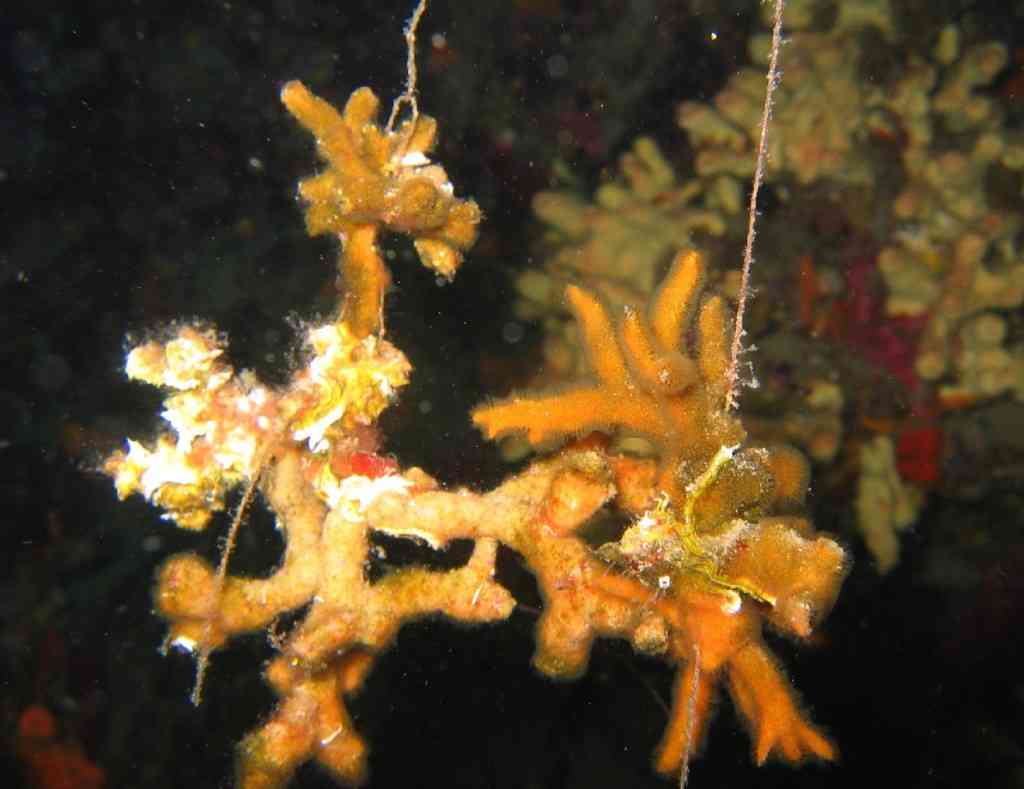Les bryozoaires
nombre : 5 000 Espèces décrites dont 180 en Méditerranée.
description:
Colonies étalées, encroûtantes ou dressées, arborescentes, foliacées, rigides ou gélatineuse fixées aux substrats des côtes et des fonds marins, de quelques millimètres à max quelques dizaines de centimètres (Rose de mer).
Les colonies sont constituées de nombreux individus (les zooïdes) à symétrie bilatérale, presque indépendants, souvent en rangées très régulières (Membranipore).
Les individus sont très petits (inférieurs à 1 mm. : nécessité loupe) et leur polypide (tentacules et tube digestif) peut se rétracter pour protection dans une logette plus ou moins calcifiée (le cystide).
La couronne de tentacules creux dévaginables non urticants est très caractéristique : c’est le lophophore.
écologie :
C’est un des groupes dominants des fonds rocheux avec les Ascidies, les Eponges et les Cnidaires.
Ils craignent beaucoup les Algues qui peuvent les étouffer : on les trouve, de ce fait, surtout dans les zones d’ombre.
Généralement peu remarqués et sans valeur commerciale.
critères de reconnaissance:
facile pour les plongeurs pour quelques colonies dont la forme est caractéristique (Bugule, Dentelle de Neptune), l’identification nécessite un examen attentif avec loupe binoculaire pour de nombreuses Espèces.
remarques:
Pas de cœur ni de système différencié pour la respiration, pas de néphridie.
relations trophiques :
filtrage passif de l’eau en continu, les particules (micro algues, protozoaires) sont capturées par les cils vibratiles des tentacules (qui sont eux-mêmes immobiles) puis dirigés vers un tube digestif bien différencié.
Digestion par estomac et intestin, évacuation par un anus donnant à l’extérieur du lophophore. Les Bryozoaire sont la proie sans défense de nombreuses Limaces de mer, de petits Crustacés et de quelques Oursins.
reproduction :
sexuée hermaphrodite simultanée, larve ciliée nageuse. Reproduction par bourgeonnement très importante.
évolution : ressemblance des larves de Bryozoaires avec les larves d’Annélides. Les colonies de Bryozoaires ressemblent aux colonies d’Hydrozoaires (Cnidaires), mais les individus sont très différents : tube digestif par exemple !




